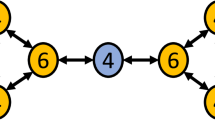Abstract
THE willistoni group of Drosophila consists of several species, subspecies and semispecies endemic to the New World tropics1. We have used electrophoretic techniques to study allelic variation at gene loci coding for enzymes in this group of species. Some 40 gene loci have been assayed in scores of natural populations belonging to 14 different taxa2–11. Two remarkable patterns have emerged. First, within a given taxon the populations (sometimes geographically separated by thousands of kilometres) have quite similar configurations of allelic frequencies at nearly all loci; and second, the allelic configurations observed in different taxa show that any two species have quite similar genetic configurations at about half the loci, but very different configurations at (nearly) the other half. A similar situation obtains when infraspecific taxa are compared, except that the proportion of loci at which the two taxa are similar is more than half, and the proportion of loci at which they are totally different becomes much less than half.
This is a preview of subscription content, access via your institution
Access options
Subscribe to this journal
Receive 51 print issues and online access
$199.00 per year
only $3.90 per issue
Buy this article
- Purchase on Springer Link
- Instant access to full article PDF
Prices may be subject to local taxes which are calculated during checkout
Similar content being viewed by others
References
Spassky, B., et al., Evolution, 25, 129–143 (1971).
Ayala, F. J., Mourão, C. A., Pérez-Salas, S., Richmond, R., and Dobzhansky, T., Proc. natn. Acad. Sci. U.S.A., 67, 225–232 (1970).
Ayala, F. J., Powell, J. R., and Dobzhansky, T., Proc. natn. Acad. Sci. U.S.A., 68, 2480–2483 (1971).
Ayala, F. J., Proc. Sixth Berkeley Symp. Math. Stat. Prob., V, 211–236 (1972).
Ayala, F. J., Powell, J. R., Tracey, M. L., Mourão, C. A., and Pérez-Salas, S., Genetics, 70, 113–139 (1972).
Ayala, F. J., Powell, J. R., and Tracey, M. L., Genet. Res., 20, 19–42 (1972).
Ayala, F. J., and Tracey, M. L., J. Hered., 64, 120–124 (1973).
Ayala, F. J., and Tracey, M. L., Proc. natn. Acad. Sci. U.S.A., 71, 999–1003 (1974).
Ayala, F. J., Tracey, M. L., Barr, L. G., and Ehrenfeld, J. G., Evolution, 28, 24–41 (1974).
Ayala, F. J., Tracey, M. L., Barr, L. G., McDonald, J. F., and Pérez-Salas, S., Genetics, 77, 343–384 (1974).
Ayala, F. J., and Gilpin, M. E., Proc. natn. Acad. Sci. U.S.A., 71, 4847–4849 (1974).
Author information
Authors and Affiliations
Rights and permissions
About this article
Cite this article
GILPIN, M., AYALA, F. Adaptive foci in protein evolution. Nature 253, 725–726 (1975). https://doi.org/10.1038/253725a0
Received:
Published:
Issue Date:
DOI: https://doi.org/10.1038/253725a0
This article is cited by
-
Associations between isozyme phenotypes and environment in the slender wild oat (Avena barbata) in Israel
Theoretical and Applied Genetics (1980)
Comments
By submitting a comment you agree to abide by our Terms and Community Guidelines. If you find something abusive or that does not comply with our terms or guidelines please flag it as inappropriate.



